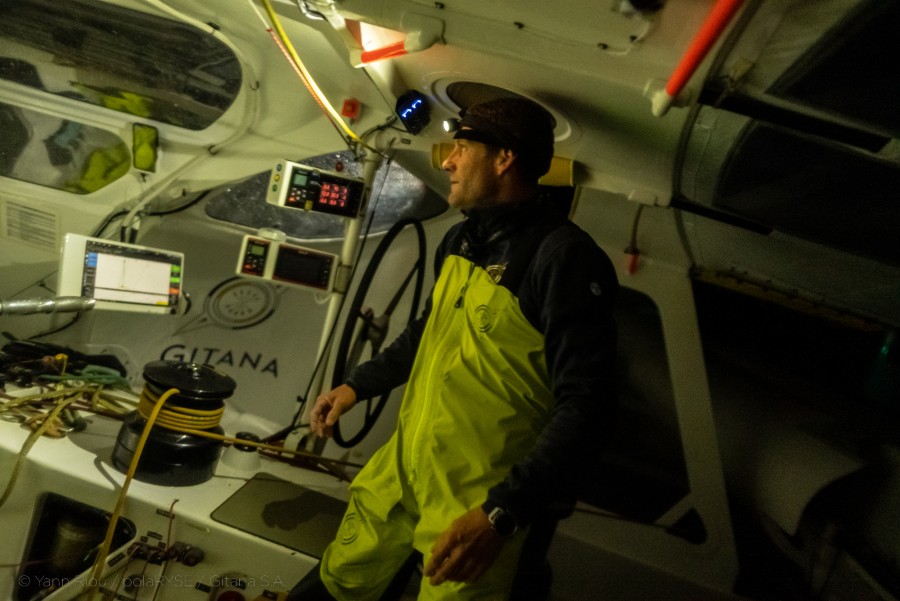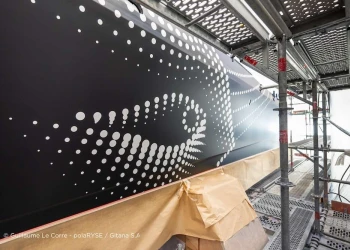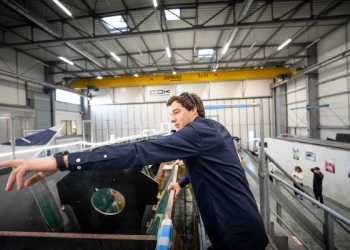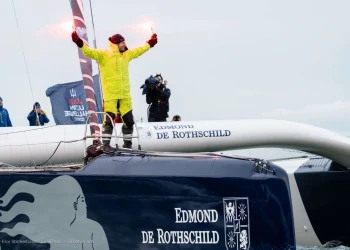
Arkea Ultim Challenge – Brest, From one ocean to the next
Arkea Ultim Challenge – Brest, From one ocean to the next
Monday January 29, 2024 - Since Sunday 28 January, shortly after midnight UTC, Charles Caudrelier and the Maxi Edmond de Rothschild have been leading the way across the Pacific Ocean in the Arkea Ultim Challenge – Brest, the largest liquid expanse on the planet. In this high-speed waltz in the land of shadows, the major challenge is to get to Cape Horn unscathed.
New reference time
He romped into the Indian Ocean thanks to a scenario that record hunters usually only dream of, "one you crave for in a Jules Verne Trophy attempt: a depression offshore of Brazil, which will carry you as far as possible with a stable wind and acceptable seas. It was almost idyllic," says Erwan Israël, one of the three members of the Gitana racing stable's routing cell.* "Conditions were decent" says Charles Caudrelier, keen to set the record straight just before banging the door shut on this much feared ocean, another reference time to his credit.
The five-arrow giant took 8 days, 8 hours, 20 minutes and 36 seconds to get through the Indian, which equates to an average speed of 30.7 knots to cover 6,113 miles** between Cape Agulhas and a longitude of 146° 55' East, to the south of Tasmania. Impressive figures, which make these sailors the new conquerors of space and time but say precious little about the austerity and difficulty of life aboard large flying multihulls, which today are faster in the open ocean than any other motorised craft. On board, the constant, abrupt motion transforms every action into a daily challenge, every intervention to effect repairs into an exploit. Even the most minor manoeuvre is a trial of strength, not to mention the stress when conditions are bad and the risk of capsize weighs heavily, making sleep impossible at times. Put all that back in its context of virtually total isolation...
Suddenly alone
This is especially true given that at the beginning of the Indian, breakages and pit stops left Charles Caudrelier all alone in the world, way ahead of his rivals. As a result, the race, which he has been leading since 17 January, has adopted a different look: one of compromise. "We put an upper limit on the speed of 30-32 knots when the seas are not too heavy and we opt for tolerant trimming. The aim is to minimise impact so as not to damage the boat, as well as to allow Charles to save some energy and make his life easier," explains Erwan Israël. The method involves curbing the ardour of the big blue trimaran, and sometimes that of a sailor who is an ultra-perfectionist, unfamiliar with doing anything in half measures. "Sometimes I get annoyed with the weather or with trajectories that are not perfect. It's quite unusual. I'm managing every aspect of the race and I'm not used to that," he admits.
One stress hunts out another
The high level of tension experienced in the South Atlantic during a speedy mano a mano with Tom Laperche, let other worries invade his mind: escaping the grey tunnel of the Southern Ocean, its austere landscapes and its tempestuous winds unscathed. "These are places where the sailing is gruelling, where you have to be mentally strong (...) As such, I couldn't care less about breaking a record. My main focus is to get to Cape Horn with a boat in good condition," admits Charles, in a message sent yesterday, Sunday 28 January. He has yet to smash the largest ocean on the planet.

Express Pacific
Upon exiting the strait that bears his name, the Portuguese navigator Magellan ended up in peaceful waters, hence why he christened this newly discovered maritime space the Pacific. The Maxi Edmond de Rothschild burst into this same ocean in the early hours of Sunday 28 January, he too enjoying favourable conditions. In principle, the elements will be in his favour for the 6,000-mile passage towards the tip of South America. "Fairly strong NW'ly winds will push us along in a straight line in the right direction," predicts the skipper. "It will be the perfect route ahead of a front, virtually as far as the middle of the Pacific, which translates as fast miles in the right direction," confirms Erwan Israël. From there, the weather situation gets a bit more complicated and the atmosphere will get noticeably chillier around the AEZ, at 58 degrees south.
In the meantime, the 49-year-old sailor, who has never spent so much time alone at sea, has taken to it like a duck to water, driving the Maxi Edmond de Rothschild to perfection, despite the doubts and the short bouts of fatigue. "I have the energy from being first, which helps you surpass yourself."





